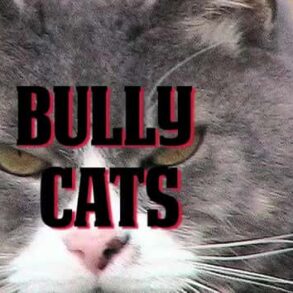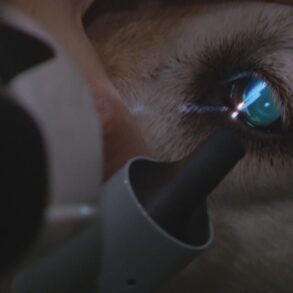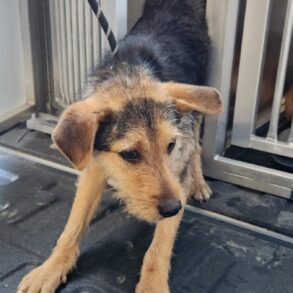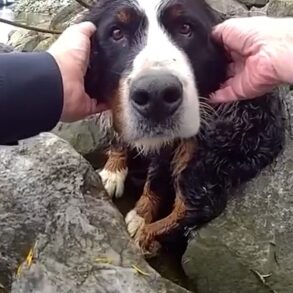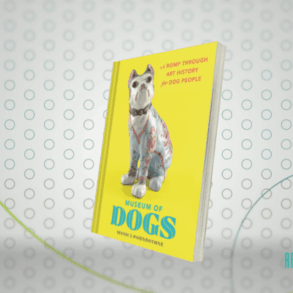Spring is a magical time when markets are overflowing with fresh-cut tulips and plant nurseries promise to bring your Secret Garden fantasies to life. But if you have pets in the home — or you live in a pet-filled neighbourhood — you may want to do a little research before blowing your spring gardening budget.
Hundreds of plants pose some level of harm to cats and dogs when ingested. Symptoms can range from mild itchiness to kidney failure. “Of course, there are some plants that are completely safe,” says Dr. Elva Ma, medical director at Wellesley Animal Hospital in Toronto. “Then there are others that are toxic, even in small doses. In many cases, the level of toxicity depends on the dose.”
Want to protect your furry friends? Beware these common plants — and learn what to do if there’s ever accidental contact.
Plants that are toxic for dogs
Sago palm — especially its seeds — is considered one of the most toxic plants for dogs. The active toxin is cycasin, which can result in liver failure. Within 15 minutes of ingesting the plant, you may see drooling, vomiting, diarrhea or lack of appetite.
There are many other plant varietals on the ASPCA’s list of plants toxic to dogs. However, the amount an animal would need to become ill varies by flower — and the size of the dog. Here are just a few of the items on the list:
-
Begonia
-
Calla lily
-
Cannabis
-
Chrysanthemum
-
Daffodils
-
Foxglove
-
Geranium
-
Hydrangea
-
Japanese, English and Chinese yew
-
Lily of the Valley
-
Oleander
-
Peony
-
Philodendron
-
Rhododendron (including azaleas)
-
Tulip
Plants that are toxic for cats
Lilies shouldn’t enter a home with cats, period. “Every couple of months, I see a case where a family has received a bouquet of lilies in the home and their cat is super interested in it,” says Ma. “Unfortunately, even a small taste of the pollen or leaves can be deadly.” Drinking the water in the vase can lead to kidney failure, too.
Before bringing any other greenery into your house or yard, it’s a good idea to cross-reference the ASPCA’s list of plants toxic to cats. There are hundreds of plants that are considered poisonous, though the animal would typically have to ingest a large amount to have a severe reaction.
Here are some examples of common plants you may wish to shy away from:
-
Cannabis
-
Chrysanthemum
-
Daffodil
-
Hyacinth
-
Oleander
-
Philodendron
-
Sago palm
-
Tulip
Plants and flowers that are safe for cats and dogs
But, luckily, many plants are considered non-toxic for both cats and dogs. Here are just a few of them:
-
Baby rubber plant
-
Boston fern
-
Cornflower
-
Forget-me-not
-
Gerbera daisy
-
Impatiens
-
Marigold
-
Money tree
-
Orchid (many varieties)
-
Petunia
-
Rose (does not include primrose, Christmas rose, desert rose, rosebay, moss rose)
-
Snapdragon
-
Spider plant
-
Sunflower
-
Zinnia
Why are these flowers plants so dangerous? What happens if my pet eats one?
It depends. Some of the flowers, like Rhododendrons, contain grayanotoxins, which can lead to vomiting and drooling — and in more rare cases, can even drop a dog’s blood pressure to risky levels and cause cardiac failure. Others, like lily of the valley, contain glycosides, which can cause heart rhythm problems and can also lead to vomiting and seizures. Daffodils, particularly the bulbs, contain lycorine, a chemical compound that can cause vomiting and abdominal pain, and in more serious cases, can also lead to heart irregularities.
Is eating grass bad for dogs or cats?
Grass itself isn’t harmful. However, it may have come in contact with chemicals, excrement, wildlife urine and other contaminants.
How to prevent your pet from eating toxic flowers and plants
If you’re a dog owner, it’s good to be aware of where your dog is and what they’re sniffing when you’re out on walks during the spring and summer — especially if they’re exploring off leash or in an area you’re less familiar with.
Signs that your pet may have ingested something toxic
Any behaviour that’s unusual for your pet is a good reason to call your vet. You may also notice these symptoms:
What to do if you know your pet has ingested a toxic plant
If you see your dog or cat eat something unusual, or you notice strange behaviour, take these steps:
-
If possible, identify the plant: Take a picture or sample of the plant if you don’t know its name. You can also collect vomit.
-
Get pro advice: Contact your vet, emergency vet or the Pet Poison Helpline (open 24/7) at 1-855-764-7661 to find out if your pet needs immediate treatment.
-
Be cautious: Do not induce vomiting unless instructed by your vet.
You may be able to monitor your animal at home if they’ve eaten something only mildly irritating. However, if they ingested something highly toxic (like if your cat ate part of a lily petal), you’ll want to head to the vet ASAP. “Usually, we’re able to induce vomiting within an hour or so of ingestion,” says Ma. “After that, the food goes into the intestines and we lose our opportunity.”
After that first hour, your vet can give your pet IV fluids to flush out toxins and combat dehydration (caused by vomiting or diarrhea). They may also administer anti-nausea medication and monitor your pet’s vitals, as well as the function of any organs that could be affected by the plant.
Let us know what you think by emailing us, commenting below and tweeting @YahooStyleCA! Follow us on Twitter and Instagram.
This post was originally published on this site be sure to check out more of their content.









